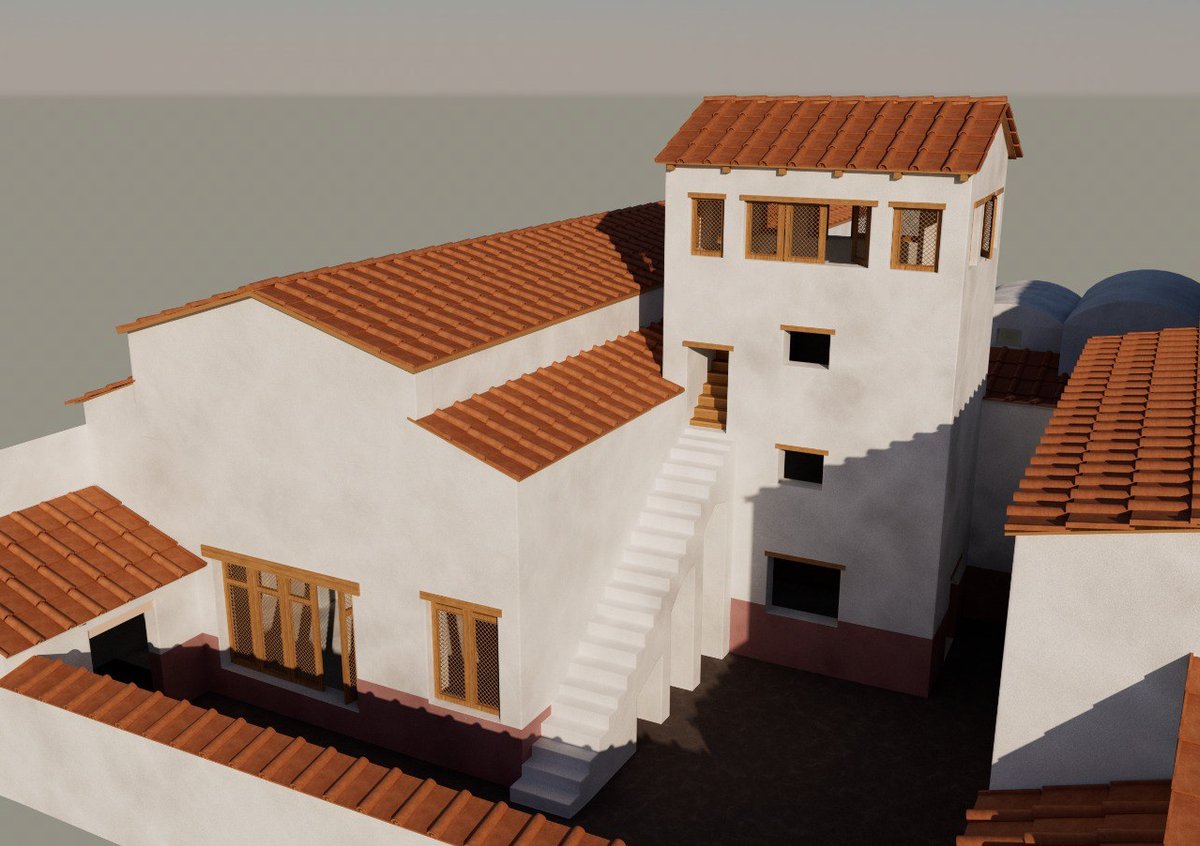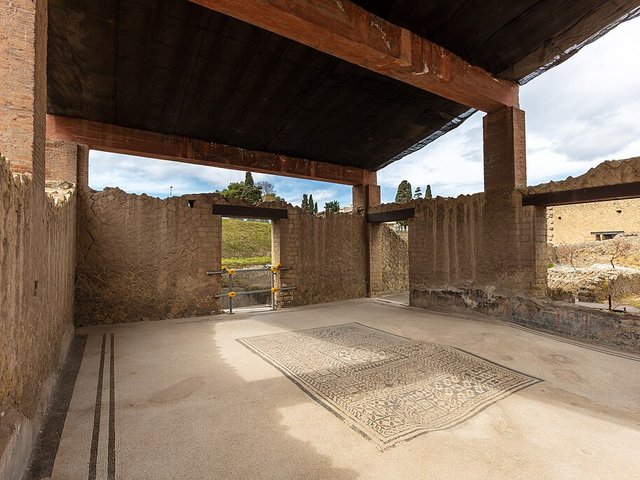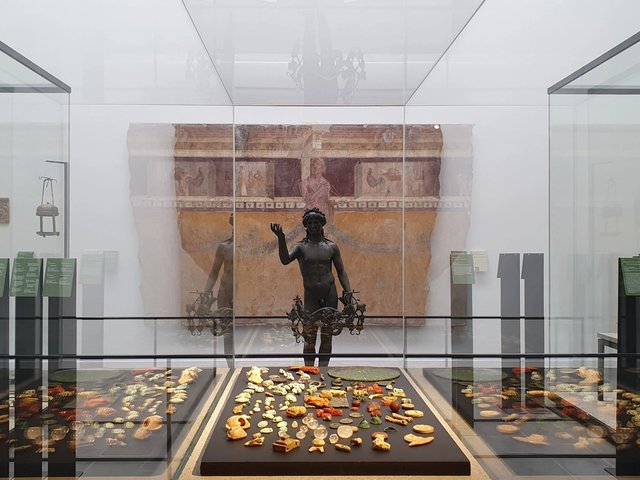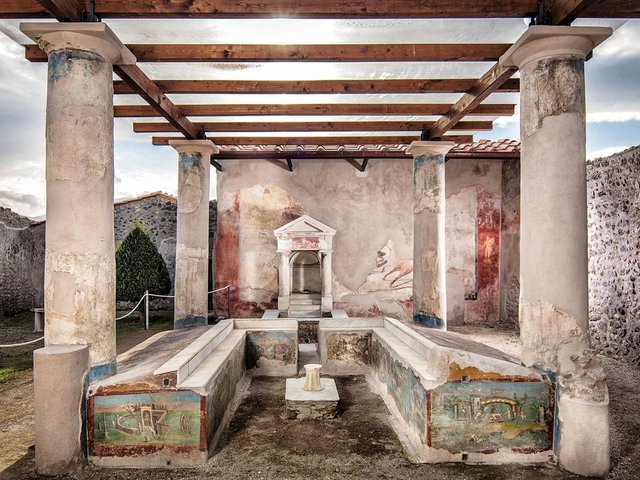The skyline of Pompeii may once have been dominated by towers symbolising power and wealth—early forerunners of the medieval structures that later loomed over Italian cities such as Bologna and San Gimignano—according to a new study.
The discovery was made as part of Pompeii Reset, an ongoing project by the Pompeii Archaeological Park and Berlin’s Humboldt University—for which researchers have used state-of-the-art technology to create 3D reconstructions of buildings that once stood in the ancient city, but were lost in 79AD when Mount Vesuvius erupted and buried them in ash. A case study of the House of Thiasus—a lavish domus likely owned by a prominent first-century politician in the Regio IX district—suggests a monumental stone staircase once led to a tower where residents could enjoy sweeping views or gaze at the stars.
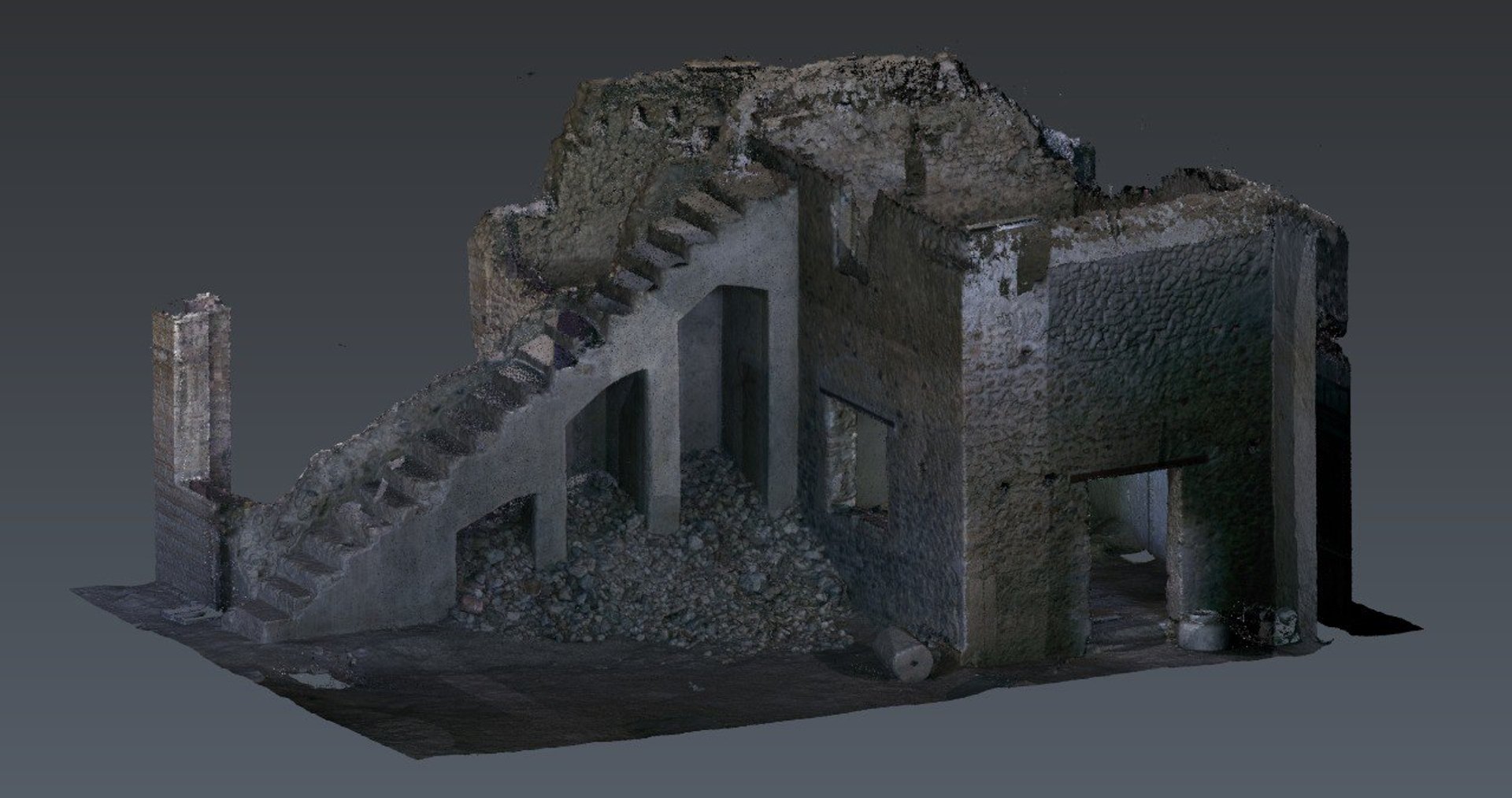
Another reconstruction shows the monumental stone staircase that may have featured at the House of Thiasus
Courtesy of Pompeii Reset
The reconstruction shows a 12m-high tiled tower with two levels and an internal wooden staircase linking a service room below, where banquets may have been prepared, to an upper dining chamber with windows offering panoramic views. Wall damage suggests the structure may have collapsed during the eruption.
The findings, published in the park’s online journal on Monday, are helping experts to determine how much of Pompeii’s vanished world lay above ground.
“Lost Pompeii mainly consists of upper floors, which are essential for understanding ancient life,” said Gabriel Zuchtriegel, the park’s director. “By combining data in 3D models, we can reconstruct experiences, spaces and social dynamics of the time.”
Other Regio IX buildings have been analysed, including the House of the Second Cenaculum and the House of the Painters at Work. Researchers used terrestrial and drone laser scanners, structured-light scanning and detailed photography to build digital base models. Missing architectural elements—including beam holes, staircases, windows and ceilings—were then identified. Missing beams were virtually reinserted and tested for structural plausibility before final 3D renderings were produced.
The team argues the results of the studies challenge long-held assumptions that upper floors were only used as “cheap rentals or slave quarters”, a misconception they say has led archaeologists to overlook them.
The reconstructed tower recalls the writer and administrator Pliny the Younger’s description of his Villa Laurentina, as well as Pompeian frescoes showing homes on multiple levels. A fresco in the grand hall of the site’s House of the Labyrinth depicts a skyline of multilevel buildings with balconies, bridges and towers.
Watchtowers are also cited in contemporary literature. Emperor Nero, for example, is said to have watched Rome burn in 64AD from the Mecenate Tower.


